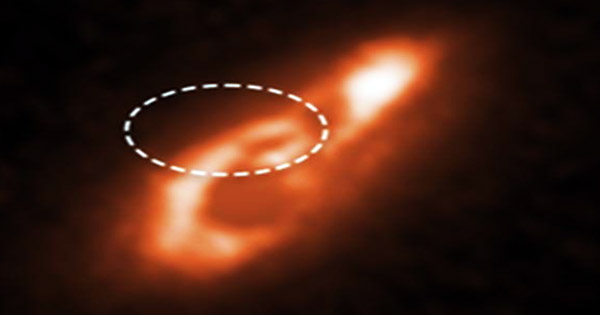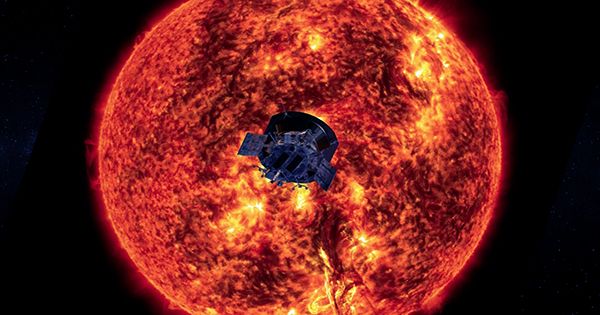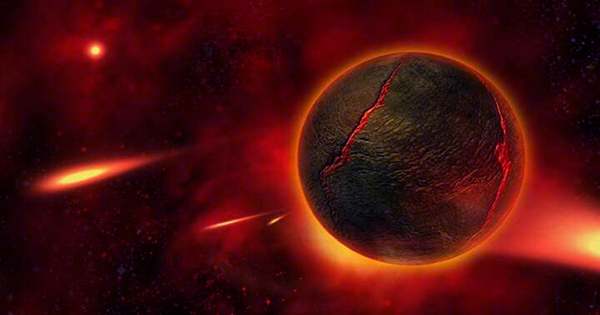Astronomers have tracked the locations of five short, strong radio explosions to the spiral arms of five distant galaxies using NASA’s Hubble Space Telescope. These remarkable occurrences, known as fast radio bursts (FRBs), produce as much energy in a thousandth of a second as the Sun produces in a year.
Researchers have had a difficult time tracing down where these transitory radio pulses come from, let alone establishing what type of item or things are producing them because they vanish in less than a blink of an eye. As a result, most of the time, astronomers are unsure where to look.
It’s crucial to figure out where these blasts are coming from, and which galaxies they come from, in order to figure out what types of celestial events cause such tremendous bursts of energy. Researchers can now narrow down the number of probable FRB sources thanks to a recent Hubble scan of eight FRBs.

Flash in the Night –
On July 24, 2001, the Parkes radio observatory found the first FRB in archival data. Since then, scientists have discovered up to 1,000 FRBs, but only around 15 of them have been linked to specific galaxies.
“Our results are new and exciting. This is the first high-resolution view of a population of FRBs, and Hubble reveals that five of them are localized near or on a galaxy’s spiral arms,” said Alexandra Mannings of the University of California, Santa Cruz, the study’s lead author. “The majority of galaxies are large, young, and still producing stars. Because of Hubble’s high resolution, we can obtain a clearer sense of the host galaxy’s general characteristics, like as mass and star formation rate, as well as investigate what’s going on directly at the FRB location.”
Astronomers not only linked all of them to host galaxies in the Hubble research, but they also determined the kind of places they came from. Hubble discovered one of the FRBs in 2017 and the remaining seven in 2019 and 2020.
“We don’t know what causes FRBs, so it’s really important to use context when we have it,” said team member Wen-fai Fong of Northwestern University in Evanston, Illinois. “Other forms of transients, including as supernovae and gamma-ray bursts, have been successfully identified using this approach. Hubble also played an important part in those investigations.”
The Hubble study’s galaxies existed billions of years ago. As a result, astronomers are seeing galaxies as they appeared when the universe was about half as old as it is now. Many of them are the size of our Milky Way galaxy. Hubble’s Wide Field Camera 3 captured the images in ultraviolet and near-infrared light.
The brilliance of newborn stars stretched along a spiral galaxy’s twisting arms is traced by ultraviolet light. The researchers calculated the mass of the galaxies and discovered where older groups of stars resided using near-infrared imagery.
Location, Location, Location –
The pictures show a range of spiral-arm structures, from tightly coiled to diffuse, demonstrating how stars are dispersed along these conspicuous features. Spiral arms trace the distribution of young, massive stars in a galaxy. The Hubble pictures, on the other hand, show that the FRBs discovered near the spiral arms are not from the brightest areas, which flare with the light of massive stars. The pictures confirm the theory that the FRBs are not likely to come from the youngest, most massive stars.
These clues allowed the researchers to rule out some of the possible causes of these brilliant flares, such as the explosive deaths of the youngest, most massive stars, which result in gamma-ray bursts and supernovae. A merger of neutron stars, the crushed cores of stars that end their lives in supernova explosions, is another unlikely source. These mergers take billions of years to happen, and they’re usually found far away from the spiral arms of older galaxies that aren’t producing stars anymore.
Magnetic Monsters –
The Hubble data, on the other hand, are consistent with the prevailing hypothesis, which states that FRBs are produced by youthful magnetar outbursts. Magnetars are neutron stars with extremely strong magnetic fields. They’re known as the universe’s strongest magnets, with a magnetic field 10 trillion times stronger than a refrigerator door magnet. Last year, astronomers connected measurements of a FRB found in our Milky Way galaxy to a known magnetar’s location.
“Owing to their strong magnetic fields, magnetars are quite unpredictable,” Fong explained.
“The flares from a young magnetar are thought to be the source of the FRBs in this case. Massive stars evolve into neutron stars, some of which can be strongly magnetized, resulting in flares and magnetic processes on their surfaces that can emit radio light. Our study fits in with that picture and rules out either very young or very old progenitors for FRBs.”
The findings also supported the researchers’ hypothesis that FRBs are associated with large, star-forming galaxies. Previous ground-based studies of certain potential FRB host galaxies failed to find underlying structures, such as spiral arms, in a large number of them.
As a result, astronomers couldn’t rule out the possibility that FRBs come from a dwarf galaxy hidden beneath a massive galaxy. According to co-author Sunil Simha of the University of California, Santa Cruz, careful image processing and analysis of the images allowed researchers to rule out underlying dwarf galaxies in the new Hubble study.
Although the Hubble findings are fascinating, the researchers stress that more observations are needed to build a more comprehensive picture of these mysterious lights and locate their source. “This is such a new and exciting field,” Fong said. “Finding these localized events is a major piece to the puzzle, and a very unique puzzle piece compared to what’s been done before. This is a unique contribution of Hubble.”
















